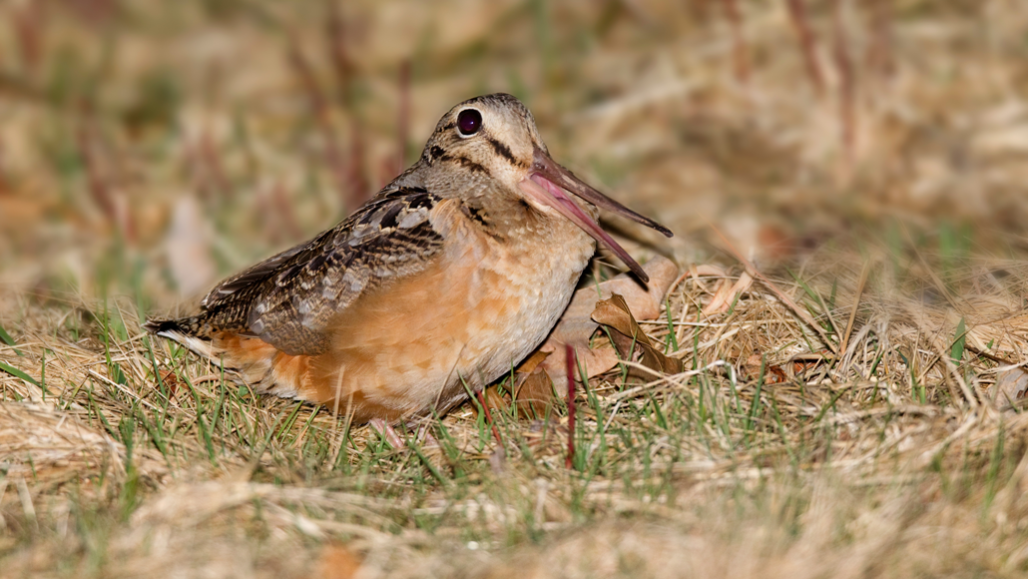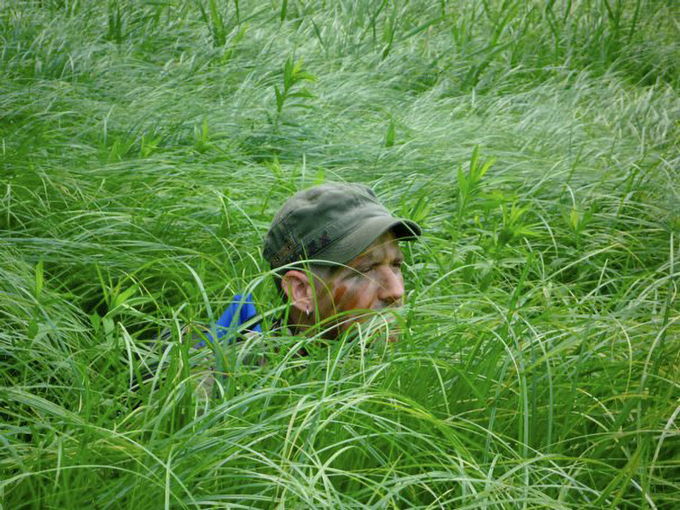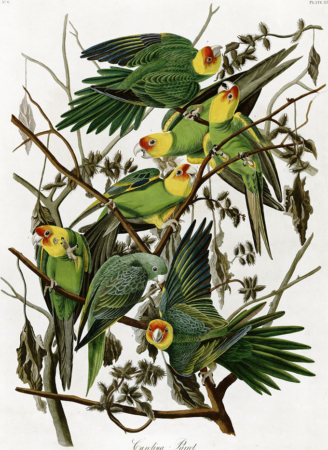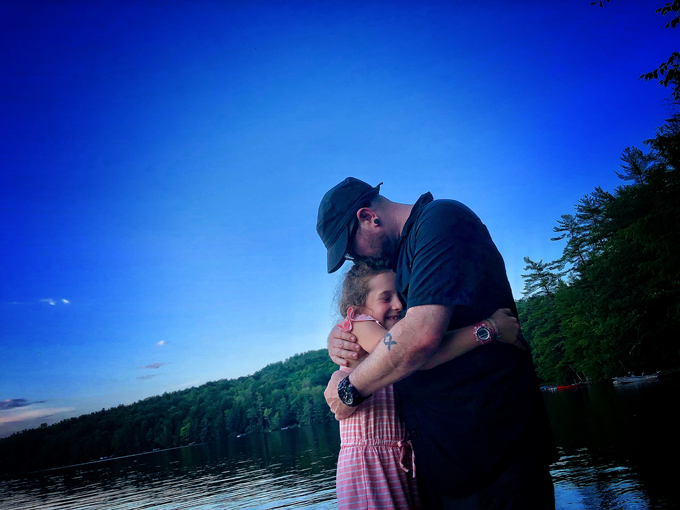How an encounter with this odd-looking bird inspired a career
Nothing could keep Kevin Burgio from becoming an expert on extinct species

Seeing an American woodcock helped lead Kevin Burgio to a career studying birds and other creatures, including what drove some extinct.
Jim Zipp/Science Source
By Bryn Nelson
For Kevin Burgio, the journey to becoming a successful scientist wasn’t easy. When he was young, life was hard. Burgio’s father left before he was born. His mother had dropped out of high school, and she never had a lot of money. Burgio knew he was different from other kids, and deep down, he knew he was bisexual when he was only 11 or 12. He didn’t tell anyone then, and was still bullied during his school years. But he managed to graduate and joined the Air Force. After several years in the military, Burgio left and went to college, eventually receiving his PhD in ecology and evolutionary biology from the University of Connecticut in 2017.

Now Burgio is an ecologist working at both the Cary Institute of Ecosystem Studies in Millbrook, N.Y., and the University of Connecticut in Storrs. He has become an expert on extinct species such as the Carolina parakeet. Burgio has pieced together where the bright green parrot once lived in the eastern half of the United States. Now he’s trying to figure out why it went extinct
Burgio also tries to help other people in and out of the sciences. He manages programs that help students learn how to become scientists. It still isn’t easy. He is an advocate for people like himself: single parents, sexual minorities and those living with physical disabilities or mental health issues. In this interview, Burgio shares his experiences and advice with Science News for Students. (This interview has been edited for content and readability. Please note that this story contains references to abuse.)
What inspired you to pursue your career?
I started college later in life, when I was 28, and had planned to go to dental school. When I started school, my hands kept shaking. I went to a neurologist and they told me I had “essential tremor.” (The incurable nervous system disorder can cause a person’s hands to shake). I had no idea what I was going to do. One day, I saw this woodcock outside my apartment window, and I had never seen anything like it. They’re weird. They look like a bowling ball with a beak on it. So I read about the bird online and found it really interesting.
The next semester, I took an ornithology class. (Ornithology is the study of birds.) The professor asked me if I was doing research. I had no idea that undergraduates could even do anything like that. That professor became my undergraduate advisor, and I started working in her lab. She was also my PhD advisor and my postdoc boss. I stayed in her lab for 11 years.
How did you get where you are today?
Some of it is luck. I think my decision to leave home helped. I didn’t want to go to the military, but it was worth it to get away. I didn’t like it, but I did well. I rose to the rank of Air Force staff sergeant before I got out. When it came to grad school, it was difficult to take care of my daughter (Hannah, who is now nine) and the household and a marriage and take classes, and do research and teach. But I just did it.
I guess it’s just this mentality that in the end, it will be worth it. I want to have a job that means something. All of the jobs that I’ve had have all been in service to something bigger than myself. I’ve just never been happy not doing more.
How do you get your best ideas?
Talking to friends, really, and you start riffing about ideas. I kind of liken it to a band sitting together, writing songs. “What about this riff? What about this drum line here?” You just kind of riff with your friends or people you do research with, based on, “I read this cool paper and check this out. It had this cool thing.” And, “Oh, I wonder if we had this kind of data, could we do something similar?” Or, “What about this study was missing that we think would add a really cool dimension to it?”
For me, it’s just surrounding myself with other people who are also very curious and also like to talk about ideas. And that’s really where a lot of my good ideas come from. It’s really a group experience, which is part of why I like it so much.
What’s one of your biggest successes?
Seeing my name in print for the first time was just an indescribable feeling. I think that made it real for me, like, wow, I’m actually a scientist.
Now I have a paper coming out soon that looks at the global diversity of parrots. One figure in it is, I think, the best thing I’ve ever done. It shows the family tree of parrots, over a picture of Gondwana breaking up. Gondwana is the supercontinent that South America, Africa, Australia and New Zealand all used to be part of. As that broke up into the continents that we know better now, some families of parrots drifted away with the continents.
I put all these really cool 1800s pictures of different types of parrots on the map of Gondwana to illustrate how the birds’ diversity is explained by the breakup of the continent. Here are the macaws, for instance, they’re in South America. And the lovebirds, they’re over in Africa. The things I really love all came together to illustrate this really complicated set of ideas. You can learn a lot about parrots just through looking at that one map.
What’s one of your biggest failures, and how did you get past that?

My biggest failure in science thus far is my inability to explain how the Carolina parakeet went extinct (the bird went extinct about 80 years ago, for still unknown reasons). I’ve been working on this for seven years. I’ve read lots of historical accounts, including travel diaries from Meriwether Lewis and William Clark (the famous explorers traveled through and mapped the western United States in the early 1800s). And I never figured it out.
That’s the thing about science, a lot of the time, you start out with a really clear idea of what you think is going to happen. And it almost never happens that way. I’ve gotten a lot out of this research. I’ve learned a lot about the species. But there’s just some things that maybe we’ll never know. Ultimately, I had to accept that maybe I’ll figure it out one day, maybe I won’t. But that’s OK.
And I’ve used all the tools that I developed in many other ways. I developed those skills for the Carolina parakeet, but I’ve also used them on other species, such as the Tasmanian tiger. The last of these animals died in Tasmania in Australia some 90 years ago. I’ve also used those skills to look into why birds went extinct from the world’s most remote inhabited islands, Tristan da Cuhna, in the south Atlantic, in the 1800s.
What do you do in your spare time?
I spend my weekends with my daughter. I really love spending time with her because, like me, she’s very curious about the world. I got her a telescope and we go stargazing. She’s really into rockhounding too. I like to explore the world with her because it’s different from how I was brought up, where I was isolated and I didn’t really interact with anyone. I want to share the world as I see it because it’s just so beautiful and amazing. We also play video games a lot, and I take her to hockey games.

In my other spare time, I really like to restore vintage things like cast iron pans, chairs and old knives. I had to read a lot about America in the 1800s to find data about the Carolina parakeet. I learned a lot about the iron industry and how cast iron pans were made. Now I can look at a cast iron pan and probably tell you in what year it was made.
What piece of advice do you wish you had been given when you were younger?
When I was five, I had a sister who died. She was four at the time. That was really the catalyst for a lot of the physical and sexual abuse that I dealt with. I do wish that I asked for more help when I needed it when I was younger. All it would have taken me was to go to a teacher and say something like, “I’m hurting. I’m struggling. I don’t know what to do. I’m in pain.” And I just never did it.
I wish I could’ve told myself, “when you need help, ask for it.” It might be embarrassing. It might be painful. It might be hard to do. But I feel like I would have benefited so much from someone knowing and caring and doing something to help me get out of that situation instead of waiting until I could just leave on my own.
That’s part of the reason why I’m so open about these things publicly. At the end of the day, if I haven’t done anything to improve the lives of people who have gone through the same stuff that I have gone through, I don’t think I could live with myself.
This Q&A is part of a series exploring the many paths to a career in science, technology, engineering and mathematics (STEM). It has been made possible with generous support from Arconic Foundation.







